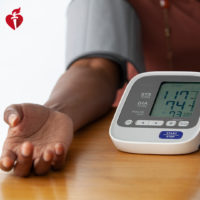October 29 is World Stroke Day. The American Stroke Association, a division of the American Heart Association, is devoted to saving people from stroke — the No. 2 cause of death in the world and a leading cause of serious disability. Strokes can happen to anyone, at any age – and about one in four people worldwide will have one in their lifetime.
More people under 50 are having strokes, due to increased risky behaviors, such as smoking and untreated high blood pressure. The good news? Up to 80 percent of first strokes may be prevented.
“Healthy habits can protect and improve brain function and lower your stroke risk. These simple suggestions are great for everyone to follow, even if you don’t think you’re likely to have a stroke,” said Susan Barnard, RN, MS, APRN, SCRN, CCRN-K of Coumadin Clinic Elliot Hospital and an American Stroke Association volunteer expert.
“While many adults don’t think they are at risk for stroke or reduced brain function,” said Barnard, “the reality is that nearly half of all adults in America have high blood pressure and untreated high blood pressure is one of the most common causes of stroke and also causes up to 60 percent of dementia.”
Here are five tips to reduce your risk of stroke and maintain mental sharpness as you age:
- Keep blood pressure in mind and under control. Get your blood pressure into a healthy range (under 130/80). High blood pressure is the no. 1 controllable risk factor for stroke. Work with your doctor to manage it.
- Eat colorful fruits and veggies. Eating lots of fruits and vegetables has been shown to lower blood pressure over time, which can help reduce your stroke risk. Some fruits and vegetables are especially rich in vitamins and minerals that improve brain function and heart health – try mangoes, avocados and blueberries.
- Rest up. Getting 7-9 hours of quality sleep each night can improve brain function both today and long-term. Make it happen with a soothing bedtime routine and avoid screen time before bed. Sleep-related breathing issues may increase stroke risk, so seek treatment right away if you suspect sleep apnea or a similar problem.
- Meditate. Emerging science shows that practicing mindfulness and being aware of your breathing may significantly reduce blood pressure and may improve blood flow to the brain. A quick way to be mindful anytime is to pause, notice your breath and take in little details in your surroundings.
- Take a walk. Getting active activates brain cells, encouraging them to grow and connect more efficiently. For clear health benefits, adults should get at least 150 minutes per week of moderate activity or 75 minutes of vigorous activity (or a combination of those activities). In addition, two days per week of moderate- to- high intensity muscle strengthening activity is recommended.
F.A.S.T. RESPONSE TO STROKES
Getting emergency medical treatment for a stroke is safe, even during the pandemic. Calling 911 helps treatment start even before you reach the hospital, improving chances for a better recovery. Everyone needs to know the stroke warning signs and the importance of immediately calling 911. It’s easy with the acronym F.A.S.T. Knowing F.A.S.T. and responding quickly in a stroke emergency may mean the difference between recovery and disability.
F – Face Drooping – Does one side of the face droop or is it numb? Ask the person to smile. Is the person’s smile uneven?
A – Arm Weakness – Is one arm weak or numb? Ask the person to raise both arms. Does one arm drift downward?
S – Speech Difficulty – Is speech slurred? Is the person unable to speak or hard to understand? Ask the person to repeat a simple sentence like “The sky is blue.”
T – Time to Call 911 – If someone shows any of these symptoms, even if the symptoms go away, call 911 and get to a hospital immediately. Check the time so you can tell emergency responders when the first symptoms appeared.
For more information, visit Stroke.org/WorldStrokeDay.